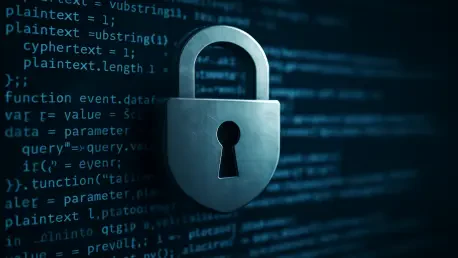In a digital landscape increasingly fraught with unseen dangers, a staggering statistic emerges: zero-day exploits have surged by 46% year-over-year, as reported in a recent comprehensive threat review for the first half of this year. This alarming spike highlights a critical vulnerability in cybersecurity defenses, where attackers exploit flaws before vendors even have a chance to patch them. The urgency of this crisis cannot be overstated, as these exploits threaten not just individual organizations but entire industries reliant on digital infrastructure. This trend signals a pressing need for heightened awareness and innovative solutions to combat an invisible yet devastating threat.
The significance of zero-day exploits in today’s environment lies in their ability to bypass conventional security measures, targeting major technology vendors like Microsoft and Google. Amid escalating geopolitical tensions, these vulnerabilities become tools for both cybercriminals and state-sponsored actors, amplifying the potential for widespread disruption. Their impact extends beyond financial loss, threatening critical systems and national security. Addressing this issue is paramount as reliance on technology continues to grow.
This analysis delves into the sharp rise of zero-day exploits, exploring the evolving tactics of ransomware, the diverse landscape of threat actors, and the broader implications for cybersecurity. Readers will gain insight into key data points, real-world examples, and expert perspectives on navigating this complex threat horizon. The discussion aims to provide a clear roadmap for understanding the challenges and preparing for future risks in an ever-shifting digital battleground.
Unpacking the Zero-Day Exploit Surge
Explosive Growth in Vulnerabilities and Exploits
The dramatic 46% increase in zero-day exploits over the past year has affected products from 27 different vendors, underscoring a pervasive challenge across the tech industry. This surge reflects a relentless push by attackers to find and exploit unpatched flaws, often outpacing the response capabilities of even the largest companies. The scale of this issue reveals a growing gap between emerging threats and existing defenses, demanding immediate attention from security teams globally.
Among the most impacted vendors, Microsoft accounts for 30% of these exploits, followed by Google at 11%, and Apple at 8%. These figures highlight how widely adopted software and systems become prime targets due to their extensive user bases, offering attackers a broad attack surface. The concentration of exploits on such prominent names indicates a strategic focus by malicious actors on maximizing disruption and gain.
Further compounding the problem, published vulnerabilities have risen by 15%, totaling 23,583 in the first half of this year, averaging about 130 new issues daily. Additionally, the Known Exploited Vulnerabilities catalog maintained by CISA saw an 80% increase with 132 new entries, many targeting perimeter infrastructure. Notably, six end-of-life products remain unpatchable, leaving organizations with outdated systems dangerously exposed to persistent threats.
Real-World Impact of Zero-Day Exploits
Zero-day exploits often strike at the heart of critical infrastructure, targeting perimeter devices and widely used software before vendors can deploy fixes. These attacks exploit the window of opportunity between discovery and patch release, leaving organizations vulnerable to significant breaches. The speed and stealth of such exploits make them particularly damaging, as defenses often lag behind.
Specific vendors like Ivanti, Qualcomm, and VMware have faced targeted attacks, illustrating the wide range of industries and products at risk. From networking equipment to mobile chipsets, the diversity of affected systems shows how no sector is immune to these threats. This broad impact necessitates a comprehensive approach to security that spans multiple domains and technologies.
A particularly troubling aspect is the focus on legacy systems, where strategic targeting exacerbates the challenge of maintaining security. Organizations struggle with the costly and complex task of replacing or patching outdated technology, often leaving gaps that attackers readily exploit. This persistent vulnerability in older systems highlights a critical need for modernization alongside robust interim protections.
Evolving Ransomware Tactics and Non-Traditional Targets
Shift to Edge Devices and Unconventional Systems
Ransomware incidents have escalated by 36% compared to last year, with 3,649 documented cases across 112 countries, marking a 9% increase in geographic spread. This growth reflects not just the volume but the expanding reach of ransomware, affecting a wider array of victims globally. The adaptability of attackers in finding new entry points drives this troubling trend.
Notable cases include the Akira ransomware attack in March of this year, which infiltrated systems via a compromised IP camera, and the VanHelsing group’s encryptor designed for BSD UNIX platforms. These examples demonstrate a shift toward exploiting less-secured edge devices and unconventional systems that often lack advanced protections. Such tactics reveal a calculated effort to bypass traditional security measures.
Edge devices like IP cameras and BSD servers are particularly vulnerable due to the absence of robust mechanisms such as endpoint detection and response. Attackers exploit these weaknesses to gain initial access, often using them as stepping stones to deeper network penetration. This trend necessitates a reevaluation of security priorities to include even the most peripheral components of an organization’s infrastructure.
Broader Implications of Ransomware Evolution
The use of non-traditional devices as entry points allows ransomware actors to infiltrate interconnected IT, OT, and IoT environments, facilitating lateral movement across networks. This strategy amplifies the potential damage, as attackers can disrupt multiple systems from a single breach. The interconnected nature of modern technology ecosystems thus becomes a double-edged sword.
Predictions indicate a continued rise in attacks targeting such unconventional systems, emphasizing the urgent need for enhanced visibility and protection across diverse environments. Organizations must adapt by implementing comprehensive monitoring to detect anomalies in less-guarded areas. Without such measures, the risk of cascading failures across critical systems grows significantly.
The global impact of ransomware is evident in the wide distribution of affected countries, showcasing the increasing sophistication and reach of these campaigns. As attackers refine their methods, the challenge for defenders lies in anticipating and countering innovative approaches. This evolving threat landscape calls for a dynamic and proactive stance in cybersecurity planning.
Threat Actors: A Diverse and Sophisticated Landscape
The cyber threat arena in the first half of this year comprises 137 notable actors, with 51% driven by financial motives, 40% backed by state sponsorship, and 9% identified as hacktivists. This mix illustrates the varied intentions behind attacks, ranging from profit to geopolitical disruption. Understanding these motivations is key to crafting effective defense strategies.
Geographically, China leads with 33 threat groups, followed by Russia with 22, Iran with 8, Turkey with 4, and Brazil with 3, while 45 groups remain of unknown origin. This distribution underscores the global nature of cyber threats, transcending borders and complicating attribution efforts. The international scope of these actors poses unique challenges for coordinated response and mitigation.
A concerning development is the blurring distinction between hacktivists and nation-state actors, particularly with Iranian-aligned groups using activist rhetoric to mask state-influenced disruptions in operational technology environments. This overlap creates ambiguity in identifying true intentions, often delaying response efforts. Such tactics highlight the need for nuanced threat intelligence to discern underlying agendas.
Insights from Daniel dos Santos, a leading research head in cybersecurity, point to the speed and boldness of these actors, exacerbated by geopolitical tensions. Attribution remains a significant hurdle, as attackers often obscure their tracks, making accountability difficult. This complexity demands advanced analytical tools and international collaboration to unmask and counter these threats effectively.
Future Outlook: Navigating a Complex Cyber Threat Horizon
Looking ahead, the trajectory of zero-day exploits and ransomware targeting non-traditional devices appears set to climb, fueled by attackers’ adaptability and an expanding attack surface. The persistent innovation by malicious actors suggests that vulnerabilities will continue to be exploited at an accelerated pace. Organizations must brace for an intensifying battle against these unseen threats.
Potential advancements in detection technologies and international cooperation offer hope for countering state-sponsored threats, though challenges like unpatchable systems persist. Developing smarter, predictive security tools could help anticipate exploits before they occur, while global alliances might deter large-scale attacks. However, the pace of technological adoption often outstrips the implementation of such solutions.
The implications span across industries, particularly in critical infrastructure and operational technology, where disruptions could trigger cascading effects on public safety and economic stability. Sectors like energy, healthcare, and transportation face heightened risks as their reliance on interconnected systems grows. Protecting these vital areas requires targeted investments and specialized defenses.
Balancing the outlook, stronger cybersecurity frameworks could emerge as a positive outcome, fostering resilience against evolving threats. Yet, the risks of persistent vulnerabilities and escalating geopolitical cyber conflicts loom large, potentially undermining progress. Navigating this duality will demand agility and foresight from both public and private sectors in the years ahead.
Conclusion: Adapting to an Escalating Threat Landscape
Reflecting on the insights gathered, the cybersecurity domain grappled with a 46% surge in zero-day exploits and a 36% rise in ransomware incidents over the past period, alongside the increasing sophistication of diverse threat actors targeting major vendors like Microsoft and Google. This escalation painted a stark picture of the challenges faced by defenders. The complexity of these threats, driven by both financial and geopolitical motives, demanded a reevaluation of existing strategies.
The urgency to adapt was evident, as unpatchable systems and non-traditional devices became frequent targets, compounded by state-influenced attacks that blurred traditional threat boundaries. Moving forward, organizations needed to prioritize rapid response mechanisms and invest in comprehensive visibility across all network layers. Building partnerships for shared intelligence and fostering innovation in security tools stood out as critical steps to mitigate risks.
Beyond immediate actions, a long-term commitment to updating legacy infrastructure and advocating for global cybersecurity norms emerged as essential. By focusing on proactive measures and collaborative efforts, the path toward resilience against evolving cyber risks became clearer. This strategic shift offered a foundation to not only address past vulnerabilities but also to anticipate and neutralize future dangers in an interconnected world.









